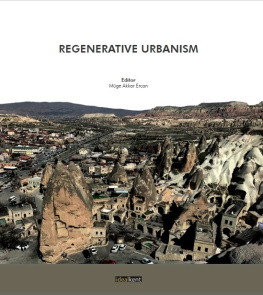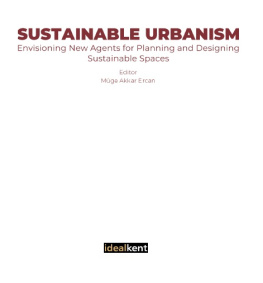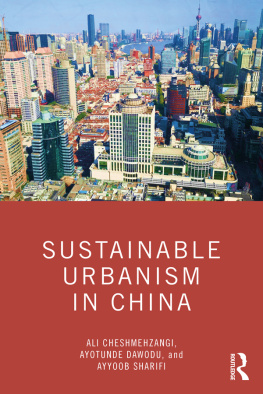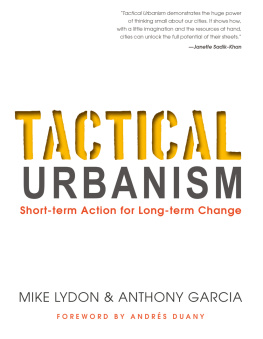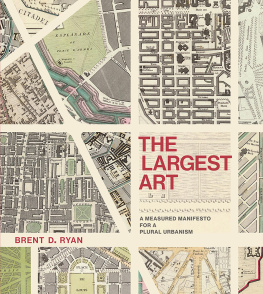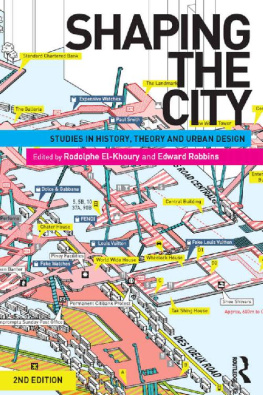Designing the Modern City

Designing the Modern City
Urbanism Since 1850
Eric Mumford

Copyright 2018 by Eric Mumford.
All rights reserved.
This book may not be reproduced, in whole or in part, including illustrations, in any form (beyond that copying permitted by Sections 107 and 108 of the U.S. Copyright Law and except by reviewers for the public press), without written permission from the publishers.
yalebooks.com/art
Designed by Jeff Wincapaw
Set in Akagi Pro type by Julie Allred, BW&A Books, Inc.
Printed in China by 1010 Printing International Limited
Cover design by Jena Sher
Library of Congress Control Number: 2017939210
ISBN 978-0-300-20772-9
e ISBN 978-0-300-23039-0
A catalogue record for this book is available from the British Library.
This paper meets the requirements of ANSI / NISO Z39.48-1992 (Permanence of Paper).
10 9 8 7 6 5 4 3 2 1
Cover illustrations: (front) Reinhard and Hofmeister; Corbett, Harrison, and MacMurray; and Hood, Godley, and Fouilhoux, 30 Rockefeller Center, 193139 (detail of ); (back) Eisenmann & Smith, Cleveland Arcade, 1890 (Library of Congress Historic American Building Survey).
Frontispiece: Lower East Side, New York, 1890 (, detail).
Contents
Acknowledgments
Many thanks first to Katherine Boller, my editor at Yale University Press, for her enthusiastic support in seeing this book to completion, and to Michelle Komie, for commissioning it in 2012. Thanks also to the other members of the Yale University Press team for their excellent work in making this book a reality. Research for this book benefited from the support for a 2012 Creative Activity Research grant from Carmon Colangelo, dean of the Sam Fox School of Design and Visual Arts, Washington University. It has also had the strong support of former Washington University Dean of Architecture Bruce Lindsey and Director of Architecture Heather Woofter. My colleagues Margaret Garb, professor of history, Sungho Kim, and Seng Kuan, whose knowledge of East Asian urbanism is unparalleled, have also been particularly helpful. I also thank my many other Washington University faculty colleagues and students, too numerous to list here individually.
Many other scholars have also provided some key insights in the writing of this book, notably Sharif Kahatt, whose invitation to teach at the Pontifical Catholic University of Peru, Lima, in 2013 offered me some important new perspectives on current issues in world urban development. Special thanks also to Mary McLeod at Columbia University; Eve Blau at Harvard Graduate School of Design; Ivan Rupnik at Northeastern University in Boston; John Hoal of H3 Studio and Washington University in St. Louis; and Jennifer Yoos and Vincent James of VJAA in Minneapolis, all of whom have thoughtfully expanded my knowledge of many aspects of this material. I am also intellectually indebted to my many former teachers, fellow scholars, and neighbors over the years who have made the research and writing of this book so intellectually productive. As always, this book could not have been completed without the ongoing encouragement of my wife and two daughters, whose patience during the long process of research and writing has been exceptional.
Introduction
The earliest evidence of cities, often defined as relatively dense and often fortified human settlements with houses and nonagricultural workplaces of some kind, dates to at least 8,500 BC . After the Mesopotamian urban revolution in the 3000s BC , in and around what is now Iraq, there emerged many ancient cities featuring temple complexes built around monumental ziggurats, and today offering remnants of early writing systems. By 500 BC , various kinds of cities, typically with populations of less than a few thousand, began to appear in many parts of the world. The ancient Romans, whose imperial capital was the first city of over one million, called the physical pattern of the city the urbs, which is the source of the English word urban. In the early twentieth century a field of inquiry and action called urbanism began to be identified. In Britain, France, northern Europe, and the eastern United States, questions of urbanization had become pressing by then, as factory jobs and railways were beginning to draw large rural populations into fast-growing cities. At the time of the first traces of cities, the worlds human population was probably under 5 million people, and by AD 1700, it had risen to only about 791 million, less than 11 percent of todays world population. By 1900, with industrialization well under way, world population was still under 2 billion, and by 1950, it was only 2.5 billion, much of it in Europe and Asia. Other than Tokyo and Shanghai, the worlds largest cities in 1950 were all still in Europe, Russia, or the United States. Today, with the world population around 7.5 billion, the fastest growing parts of the world are in South Asia and Africa. With the exception of New York, all of the worlds ten largest metropolitan areas are also now in Asia, with six of them in China and India, the worlds most populous countries.
Many technical and social changes since about 1850 have set world population and the size of cities onto this course of massive expansion. These changes have certainly included the growth of world trade, initially facilitated by maritime empires, double-entry bookkeeping, and the use of gunpowder, as well as by the continuing development of more advanced economic systems that encouraged innovation and the search for new markets, which often led to large trading networks and in some cases, colonial empires. These directions greatly advantaged small groups with superior access to military resources and relevant knowledge, which massively expanded their abilities to both control and enslave, and, at times at least, to enrich, ever-growing numbers of people.
This book is an account of how key figures in design over the past century and a half have responded to these changing social, technical, and economic urban circumstances with both realistic proposals and more theoretical concepts that have often had a major impact. It considers built outcomes that in some cases, as in nineteenth-century Paris, Berlin, Vienna, and Barcelona, or in twentieth-century New York, New Delhi, and Tokyo, resulted in urban environments that are still admired, as well as often providing the urban frameworks for many later design interventions. It also traces the various twentieth-century revisions to what began to be called town planning or urbanism in France around 1910, which extend from Hampstead Garden Suburb in London to Chandigarh and beyond. By focusing on these contending and sometimes mutually antithetical mainstream projects and discourses about how urban designers should approach their work, I describe both how cities were designed, as well as trace ideas about how various designers thought that they should be designed.
This book is not intended to be an encyclopedic history of global urban development since 1850, which would rightly be mainly focused on detailed specific histories of how patrons, builders, designers, workers, and government agents have shaped particular cities. Nor is it intended to be primarily a history of urban technologies and their impacts on the natural world. Instead, it is an account of how key figures in design responded to changing social, technical, and economic circumstances with design proposals and built projects, creating what are now mainstream discourses about how urban environments should be designed, a field that can broadly be called urbanism. This focus necessarily puts the most weight on the often contending ideas about the design of cities by a diverse range of figures. These include Napoleon III, an elected nineteenth-century French president who declared himself emperor; Ildefons Cerd, the Barcelona engineer who coined the term urbanization; Camillo Sitte, father of the idea of city building according to artistic principles; Frederick Law Olmsted, founder of the field of landscape architecture; the Garden City theorist Ebenezer Howard; Patrick Geddes, advocate of regionalism seen in light of place, work, and folk; Le Corbusier, a central figure in both modern architecture and modernist urbanism; Josep Llus Sert, Catalan migr architect, president of CIAM (International Congresses of Modern Architecture), and institutional patron of the postwar field of modern urban design; Henri Lefebvre, radical postwar French theorist of the popular right to the city and the politics of space; and Aldo Rossi, Milanese champion of the architectural importance of historic cities and their traditional urban forms. It also includes accounts of the urban design concepts of groups such as CIAM and the Congress for the New Urbanism, along with their antecedents, successors, and critics. The first part of the book focuses on what were until recently understood to be mainly European imperial and American urban patterns, and which are now often, in transformed ways, becoming global patterns. The complexity of this transfer, and its still-emerging outcomes in the many new cities and urban environments of Asia, the Middle East, sub-Saharan Africa, and elsewhere, is addressed in the last chapter.
Next page

